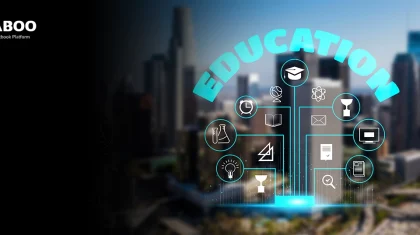
How AI Can Boost Student Engagement in the Classroom
Summarize this blog with your favorite AI:
Traditional teaching methods struggle to capture students’ attention due to the growing impact of digital distractions and different educational requirements. This is where student engagement through AI transforms classrooms with individualized, interactive, and engaging learning opportunities.
There are now endless possibilities for how AI could influence students’ learning interactions—from gamification to turning classes into experiences with total engagement and adaptive learning systems that will adjust to every student’s pace. This is more than just a technological advancement; it is likely a means of rethinking learning opportunities and ensuring no student is left behind.
This blog will examine AI’s transformational ability in the classroom by reviewing how it personalizes the learning experience, provides real-time feedback, and enhances collaboration. Read on!
Table of Contents:
I. Enhancing Classroom Engagement with AI-Powered Learning
- Personalized Learning Through AI
- Real-Time Feedback and Assessment
- Gamification and Interactive Learning
- Enhanced Collaborative Learning
- Increasing Accessibility and Inclusivity in Education
- Streamlining Administrative Tasks
- Implementing AI Engagement Tools
II. To Wrap Up
Enhancing Classroom Engagement with AI-Powered Learning
Here’s a snapshot of how AI-driven tools and strategies can create a more interactive, personalized, and engaging learning environment for students.
1. Personalized Learning Through AI
Many times, using a standard teaching approach, traditional educational methods would not be able to accommodate the several learning styles and speeds of unique pupils.
Student engagement through AI addresses this by enabling personalized learning experiences. By analyzing data on student performance, AI-based systems modify educational content to fit the unique needs of each student.
For example, adaptive learning systems powered by artificial intelligence determine the student’s strengths and weaknesses and adjust the course according to adequate levels of challenges and much-needed assistance. This adaptability increases students’ motivation and engagement by empowering them to take charge of their education.
Digital textbook platforms such as KITABOO use this tactic. They offer interactive eBooks with multimedia elements that let students engage with content according to their preferred learning method.
Key Benefits of Personalized Learning through AI:
- Customized content delivery improves student retention and comprehension.
- AI systems give students focused feedback, enabling them to fill in knowledge gaps.
- Customized learning promotes self-paced instruction, increasing confidence and engagement.
2. Real-Time Feedback and Assessment
Student engagement through AI allows you to evaluate various student involvement parameters, including speech tones, facial expressions, and interaction patterns. By examining these components, these systems could alert educators to signs of uncertainty or disengagement.
According to research, AI technologies—including facial and speech recognition—can monitor and evaluate student involvement in real time, allowing teachers to adjust their teaching plans accordingly.
Further liberated from time-consuming administrative tasks, AI-powered systems can automate grading and offer individualized comments on assignments. This effectiveness helps teachers to concentrate more on direct contact with learners, improving the learning environment.
How Real-Time Feedback Enhances Engagement:
- Immediate feedback helps frustration and encourages active involvement.
- Customized to fit individual performance, AI-generated comments ensure relevancy.
- Real-time evaluations help teachers identify and address problems right away.
3. Gamification and Interactive Learning
Gamification—that is, including game-like components in instructional activities—has shown success in increasing student involvement. Artificial intelligence plays a very important role in developing and implementing an entertaining and educational gamified learning experience.
Artificial intelligence can create interactive activities like scavenger hunts, quizzes, and simulations that adjust to the learner’s performance and progress.
These activities promote critical thinking and problem-solving skills while keeping learning fun. AI can develop a game similar to Jeopardy on a given subject, providing students with a platform to engage with the content entertainingly and competitively.
Platforms like KITABOO provide a deeper application of this gamified learning approach by integrating interactive diagrams, audio samples, and videos into eBooks. These tools capture students’ attention and offer greater knowledge, turning conventional learning resources into immersive experiences.
Why Gamification Works:
- Compelling narratives and challenges inspire inquiry and drive.
- Recognition and rewards help promote peer cooperation and healthy rivalry.
- Experiences in interactive learning AI help to retain knowledge.
4. Enhanced Collaborative Learning
Collaboration is an avenue for acquiring a skill set in communication and teamwork.
AI can foster cooperative learning by connecting students to peers and resources compatible with the learning objectives. Such platforms might match students for group projects based on interest or skill level to facilitate fair and effective teamwork.
Moreover, AI can suggest relevant tools and materials to assist group projects and improve learning.
AI-driven tools, for example, might examine group interaction patterns and offer an understanding of how teams might strengthen their working plans. This analytical style facilitates the development of a more harmonic and efficient classroom.
Boosting Collaboration with AI:
- AI tools facilitate virtual group discussions and peer reviews.
- Cooperative platforms promote shared knowledge and peer learning.
- AI systems provide materials catered to team projects and operations.
5. Increasing Accessibility and Inclusivity in Education
It allows AI to serve as an equalizer for education regarding inclusion and accessibility. Students with different learning needs, including those with disabilities, can benefit from assistive technology provided by AI.
Text-to-speech and speech recognition applications involve students with visual or hearing disabilities in the instructional process.
Moreover, artificial intelligence-driven language-translating technologies enable non-native speakers so that language barriers do not hinder education through real-time translations.
Key Advantages of AI-Driven Accessibility:
- Ensures equal learning opportunities for students with disabilities.
- Supports diverse learning preferences, including auditory and visual learners.
- Breaks down language barriers through real-time translation and localization.
6. Streamlining Administrative Tasks
It is quite tough for school teachers since the lines between administrative duties and their purely instructional ones tend to blur. This is where AI comes in, for it generally removes drudgery from all these tedious tasks so that teachers can have time to focus on students and engage with them more meaningfully.
AI excels at scheduling applications, attendance monitoring, and grading systems. Simplifying these procedures helps teachers concentrate on creating creative teaching plans and engaging more with their students. This change improves the caliber of instruction and the dynamic classroom environment.
AI Solutions for Administrative Efficiency:
- Automated grading systems save time and reduce human error.
- Intelligent scheduling tools optimize lesson planning and classroom management.
- Digital attendance tracking enhances accuracy and reduces paperwork.
7. Implementing AI Engagement Tools
The effective application of AI engagement tools will determine whether or not AI successfully integrates into classrooms.
Educators should give the following some thought:
- Professional Development: Teachers should go through training to fully understand and use AI solutions effectively. Mastery of artificial intelligence helps teachers to include them in their curricula.
- Ethical Considerations: Though artificial intelligence offers many benefits, ethical use, and data privacy issues need careful thought. Well-defined policies protect student privacy and ensure appropriate use of AI.
- Ongoing Assessment: AI in classrooms helps to improve how they are utilized to reach learning goals. In this iterative process, student and teacher input is vital.
To Wrap Up
With technology-increasing marvels, universities have an open-door policy toward these advances and subtly observe how they would contribute to a better education without compromising moral ground.
Digital textbooks like KITABOO highlight the enormous promise of emerging interactive and immersive learning environments. The platform guarantees safe and interesting learning experiences with DRM protection, analytics, and AI-driven customization.
Book a demo to see how KITABOO can help!
Discover how a mobile-first training platform can help your organization.
KITABOO is a cloud-based platform to create, deliver & track mobile-first interactive training content.



